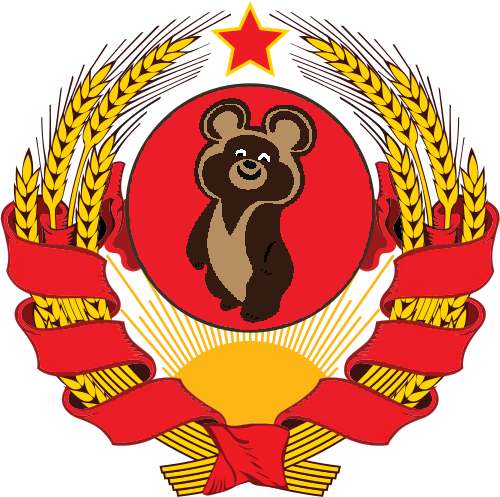Mishalan
| |

|
|
| Feudal Status: | Territory |
| Capital: | Mishagrad |
| Largest Cities: | Old Mishalan, Vena, Jeanezville |
|
| |
| Local Leadership Title: | General Secretary |
| Local Government: | Communist |
| Current leader: | Vladimir Medvedev |
|
| |
| Local language: | Russian |
| Local Religion: | Atheist |
Mishalan is a region in Benacia, corresponding to several former territories and tied to Amokolia for much of its long history. Its most recent form as a communist state took root around 5000 ASC. The borders of the original Mishalan once extended all the way to the northern shores of Benacia. More recently however the territory has come to encompass central Benacia and the delta of the western branch of the River Elwynn, extending south into Shireroth's Transelwynn Territory.
Etymology and terminology
The name Mishalan has its origins in the local Benacian population and scholars suggest its roots originate in the Bjorngarder population to the north, which shares a similar bear-centric culture. Misha itself is a diminutive form of bear in the local language, and therefore the name Mishalan itself means "land of the bears". It is an accurate description given the long history of bear husbandry the Mishalanski exhibit and, to this day, still regularly practice.
History
Mishalan was originally founded by Jess Heimer as a subdivision of Amokolia, then an independent micronation, around 3184 ASC (April 2008). Amokolia itself went through numerous different phases of government, often switching from a monarchy to a republic and back again. Originally Amokolia's Benacian territories consisted of three provinces, Oleslaad, Vattnaland, and Mishalan, but by 5021 ASC Mishalan dominated the Benacian lands and formed Greater Mishalan. This also marked the start of communist government in Mishalan and the formation of a Soviet Republic. This was mostly the result of encroachment by Elwynn, which at the same time had begun to expand into the surrounding areas vacated by Amokolia, such as Lun Ezkaron, Araxion and Iserdia. Although a conflict was averted, a Cold War persisted and the Imperial government of Shireroth was viewed with enmity, encouraging greater support for the leftist government of Mishalan. At this time Amokolia became a protectorate of Natopia, which had much more lax governmental regulation and allowed the socialist government of Mishalan to function with significant autonomy.
The area briefly passed to Shireroth around 5487 ASC, which held onto northern portions of Amokolia along the Benacian coast. The southern portion - including the core of Mishalan - then passed to a resurgent Kingdom of Amokolia, around 5567. Under the tyrant King Jean the monarchy violently suppressed the Mishalanski. This resulted in the large-scale migration of people from Mishalan into Shireroth's Transelwynn Territory. Under provisions made possible by Kaiseress Kizzy, the Mishalanski settled along the banks of the River Elwynn and founded the city of Mishagrad, forming a government-in-exile and a new district within the Transelwynn.
A resurgence of the Cabbage Plague in Amokolia and the resulting death of the tyrant King Jean in 5968 ASC, the way was paved for the Mishalanski government-in-exile to resume control of their historic homeland. This was met however with renewed hostility from Elwynn, which also sought to exert control over the vacated Amokolian lands. Although both entities were subjects of the Kaiser, who actually held power over the territory resulted in a renewed Cold War between Mishalan and Elwynn. At present neither power recognizes the respective opposing claim over the region.
Culture
When Amokolia first exerted control over its Benacian territories they laid claim to a long portion of the northern coast that was once a part of Bjorngard, a territory populated by Cimmerians and Raikothians. Bjorngard was founded as a vanguard of the Hyperboreans when they first made expeditions into the Benacian wilderness many centuries ago. These virile warriors were faced with dense coniferous forests populated by hostile natives. Establishing a foothold was an extremely difficult task, and required innovation on the part of the pioneers. Thus it came as little surprise that they came to utilize the tools on hand; this being a prolific population of bears. Finding them trainable, the settlers embarked upon a unique form of animal husbandry, training the bears as beasts of burden, mounts, and military companions. With little other native fauna capable of serving the tasks put to the hardy bears, they became significantly interdependent. Over time the bears took on symbolic importance and eventually led to the area being known as Bjorngard (Bear Guard).
When the Amokolians came, the remnants of Bjorngarder culture were adopted by the Mishalanski. While the Bjorngarders emphasized a relationship with polar bears, the Mishalanski, who settled further south, adopted the Benacian brown bear (Ursus arctos arctos) as their totem animal. It was the Mishalanski that perfected the art of bear cavalry and of utilizing bears in battle, however it wasn't until the communist regime took power that the bear became a national symbol. Most commonly the Benacian brown bear is represented by the diminutive caricature of Misha, the national personification of the Mishalanski (e.g. like Columbia serves as the personification of the United States). To this day, pet bears are a common sight in most Mishalanski homes.
